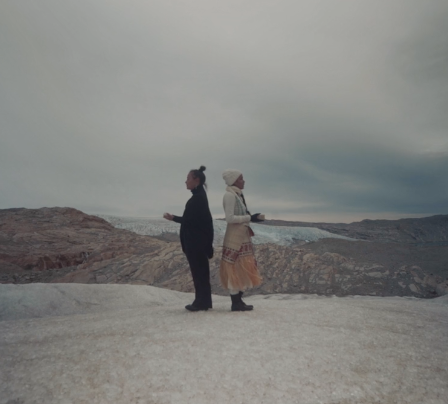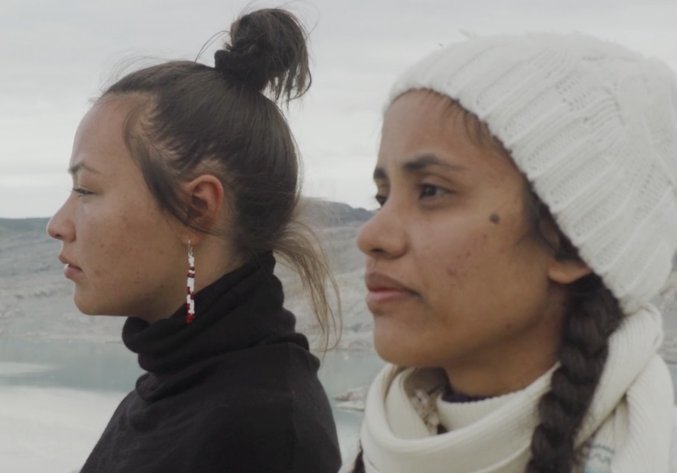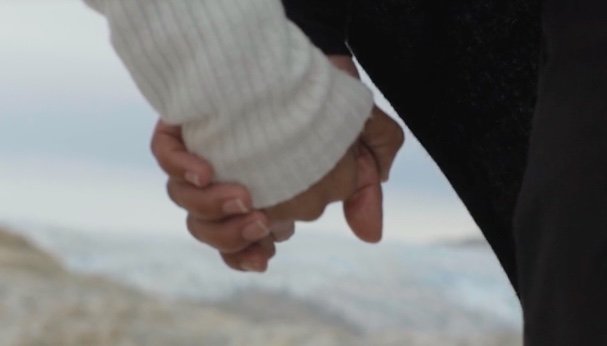Na Viro, by Gina Cole
Oct. 26th, 2022 02:02 pmThis is an imaginative and ambitious book.
What I loved most was its worldbuilding, so rich and overbrimming. It takes place in a high-tech, Pacific-centered, post-apocalyptic future. It’s a future in which people are given prosthetic irises at birth to compensate for damage omnipresent radiation would do to their eyes, and in which the Pacific islands that are protagonist Tia’s ancestral homeland now lie 10 meters underwater. Even tiny wordbuilding details are delightful, like lakescreens, films of water that serve both as communications screens (for visuals across long distances, or to display data) and as doors, or like the main Earth spaceship type—the puffer fish.
The indigenous, oceangoing peoples of the Pacific are a big part of this future, and I love that. In an interview, Cole says she wanted to portray a future in which indigenous peoples exist and are thriving, and she definitely succeeds. At the start of the story, Tia is training to work for the Global Indigenous Alliance:
I say the book is ambitious because it tries to cover a lot. It wants to highlight Pasifika lifeways and outlooks, and does, both in how deep-space phenomena and travel are understood and also in some wonderful scenes on Earth, like when Tia is sailing a drua, a traditional double-hulled sailing ship, with her uncles. I loved how traditional and modern were blended in the creation of the drua’s sails:
But there’s also the through-line plot: events take Tia away from the currents of the Pacific and into deep space on a mission to rescue her older sister, Leilani, who has been lost in a space whirlpool. Once Tia is out in space, she becomes aware of dangerous, bigger stakes. ( spoiler )
And meanwhile there’s also a painful family story going on: Tia and Leilani’s mother Dani left them behind with their grandmother when they were small so she could pursue a career in the stars. Dani’s lack of involvement with Tia and Leilani is a source of pain and resentment for Tia, who firmly rebuffs her mother’s few, half-hearted attempts to reach out.
That’s not all: there’s also a love story involving an AI (referred to in this story as a ghostborg—great term—or an embod), which goes into a fair amount of depth regarding that AI’s history.
It’s a lot to weave together, and for me in some places it lurched a bit. That’s more or less forgivable, though, because the parts that you lurch to are so interesting. More bothersome for me was Tia’s relationship with Dani. We pretty much exclusively see Tia resenting and disliking Dani, so it was a bit hard for me when Tia would waver and seem to want validation from Dani or disbelieve negative information about Dani—especially seeing as Tia has never lacked for love and support from her grandmother and big sister. But maybe Cole is intending to show the power of the notion of “mother.”
Interestingly, when the ghostborg Turukawa is sharing the story of her creation with Tia, she recounts the tale of how the Fijian snake god Degei nurtured two eggs that his lover Turukawa (for whom the ghostborg is named), a great hawk, had abandoned. The hatchlings became the forebears of the Fijian people. Turukawa says
This seems like a fruitful and thought-provoking way to think about Tia and Leilani’s situation, and I would have loved to have seen that parallel expanded on somehow.
I want to end, though, by returning to the imaginativeness of the worldbuilding, landscapes, and characters. If you think of stories as places where you spend time, Na Viro is a great place to spend some time. I will definitely read more from Gina Cole.

What I loved most was its worldbuilding, so rich and overbrimming. It takes place in a high-tech, Pacific-centered, post-apocalyptic future. It’s a future in which people are given prosthetic irises at birth to compensate for damage omnipresent radiation would do to their eyes, and in which the Pacific islands that are protagonist Tia’s ancestral homeland now lie 10 meters underwater. Even tiny wordbuilding details are delightful, like lakescreens, films of water that serve both as communications screens (for visuals across long distances, or to display data) and as doors, or like the main Earth spaceship type—the puffer fish.
The indigenous, oceangoing peoples of the Pacific are a big part of this future, and I love that. In an interview, Cole says she wanted to portray a future in which indigenous peoples exist and are thriving, and she definitely succeeds. At the start of the story, Tia is training to work for the Global Indigenous Alliance:
She had a job to do, mapping Pacific Ocean currents for the gravity web – Kermadec Trench, Tonga Trench, Lau Basin. She had learnt to sail with the ocean rhythms, to steer the cross currents. She’d learned these skills from her grandmother, her bubu. She had trained all her life to map the ocean.
I say the book is ambitious because it tries to cover a lot. It wants to highlight Pasifika lifeways and outlooks, and does, both in how deep-space phenomena and travel are understood and also in some wonderful scenes on Earth, like when Tia is sailing a drua, a traditional double-hulled sailing ship, with her uncles. I loved how traditional and modern were blended in the creation of the drua’s sails:
Dua hauled a rickety old 3D printer into the lounge and inputted a design for multiple large exo-patch squares. The printer spat out reams of plaited exo-patches resembling pandanus matting in colour and texture, but stronger and interwoven with multiple solar power conduits. Tia sat in the long grass next to the uncles and helped sew the patches together into a triangular sail with a large hook needle.
But there’s also the through-line plot: events take Tia away from the currents of the Pacific and into deep space on a mission to rescue her older sister, Leilani, who has been lost in a space whirlpool. Once Tia is out in space, she becomes aware of dangerous, bigger stakes. ( spoiler )
And meanwhile there’s also a painful family story going on: Tia and Leilani’s mother Dani left them behind with their grandmother when they were small so she could pursue a career in the stars. Dani’s lack of involvement with Tia and Leilani is a source of pain and resentment for Tia, who firmly rebuffs her mother’s few, half-hearted attempts to reach out.
That’s not all: there’s also a love story involving an AI (referred to in this story as a ghostborg—great term—or an embod), which goes into a fair amount of depth regarding that AI’s history.
It’s a lot to weave together, and for me in some places it lurched a bit. That’s more or less forgivable, though, because the parts that you lurch to are so interesting. More bothersome for me was Tia’s relationship with Dani. We pretty much exclusively see Tia resenting and disliking Dani, so it was a bit hard for me when Tia would waver and seem to want validation from Dani or disbelieve negative information about Dani—especially seeing as Tia has never lacked for love and support from her grandmother and big sister. But maybe Cole is intending to show the power of the notion of “mother.”
Interestingly, when the ghostborg Turukawa is sharing the story of her creation with Tia, she recounts the tale of how the Fijian snake god Degei nurtured two eggs that his lover Turukawa (for whom the ghostborg is named), a great hawk, had abandoned. The hatchlings became the forebears of the Fijian people. Turukawa says
“[My creator] often pondered how people might have turned out if Degei hadn’t stolen Turukawa’s eggs. Would people have grown into different beings if their real mother Turukawa the hawk had raised them?”
This seems like a fruitful and thought-provoking way to think about Tia and Leilani’s situation, and I would have loved to have seen that parallel expanded on somehow.
I want to end, though, by returning to the imaginativeness of the worldbuilding, landscapes, and characters. If you think of stories as places where you spend time, Na Viro is a great place to spend some time. I will definitely read more from Gina Cole.






